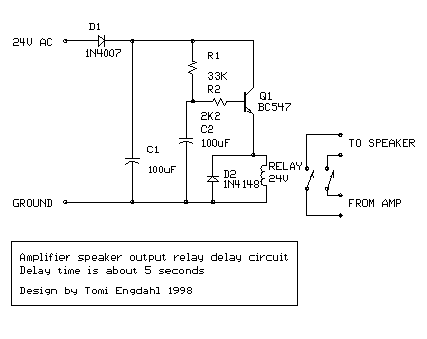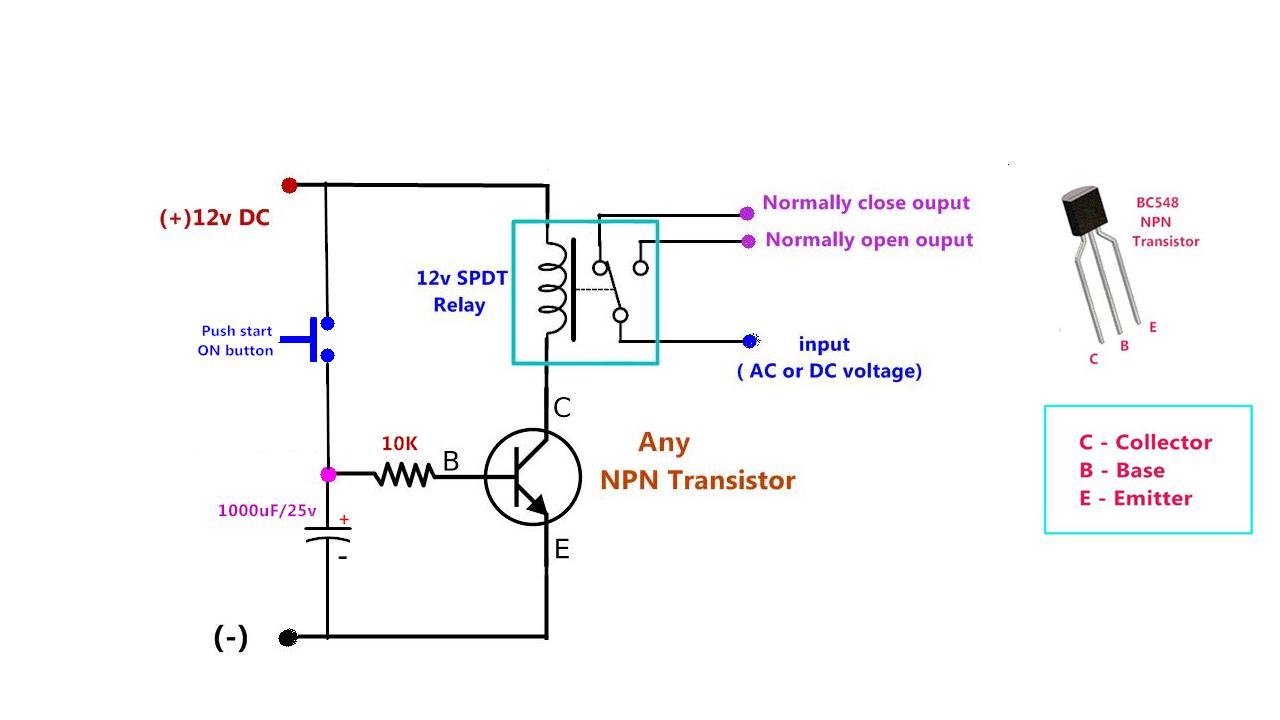


The firmware would do the debouncing of the switch, and produce a digital signal that would transition effectively instantaneously between high and low. The switch would be connected between ground and one of the input pins configured with a internal passive pullup. In the real world, especially when delay accuracy matters, this would be done with a microcontroller like the PIC 10F200. There are of course various ways this circuit can be tweaked to get even more features, but it gets silly at some point. The 47 ♟ I show is as good a starting value as any.įor a more predictable delay, a resistor can be added across C1. The easiest way to get the desired delay is to try a value of C1, then adjust up or down by experimentation. The exact delay is a bit hard to predict because it depends on the gain of the transistors, particularly of Q1. The off delay timing is mostly a function of C1 and R6. This type of positive feedback is also called hysteresis, and provides a fast transition from the on to off state once turning off starts. Due to R5, this makes the base voltage of Q1 rise just a little, which turns it off more, which turns Q2 off more, which makes the Q2 collector voltage go higher, etc. When the Q2 first starts to turn off, its collector voltage will rise. R5 is a little positive feedback to make it "snap" off. However, that turnoff will happen slowly. That turns off Q2, which turns off the relay. Eventually the capacitor will discharge enough thru R6 to no longer keep enough voltage across R6, which causes insufficient current thru R6 to keep Q1 on. It will stay that way in the short term, keeping the relay on. When the switch is opened after having been closed for a while, the capacitor is fully charged. This could damage SW1, and large current transients will cause noise and other problems. The purpose of R2 is to limit the large current that would otherwise flow thru the capacitor when the switch is first closed. Closing the switch essentially shorts the left end of R6 and the bottom of the capacitor to ground.

With the left end of R6 held at 0 V, more than enough current will flow out of the base of Q1 to turn it solidly on. To turn on the relay therefore requires turning on Q1. When Q1 is on, there will be about 2 mA of current into the base of Q2, which will turn on the relay. To make sure they are solidly on and to leave some margin, I aimed for a base current roughly twice what it needed to be, or 1/25 of the collector current. These transistors can be counted on to have a gain of at least 50. This reverse voltage will decrease the coil current quickly, turning off the relay quickly.
#Power on time delay relay circuit full#
R1 will develop about 6 V across it when the full coil current initially flows thru it. When the transistor switches off, there has to be a safe path for this current to take, else it will make a high voltage and blow out the transistor. The relay coil has considerable inductance, so can't change its current instantaneously. In this example, I assumed a relay that requires 50 mA of coil current.ĭ1 and R1 conduct for a short time after the relay is switched off. Q2 does the actual switching of the relay.
#Power on time delay relay circuit how to#
I was originally just going to ignore it, but then decided this might be a good teachable moment about how to do something like this with "snap action" using only a few discrete parts: For some reason, EMFields renewed his nagging about this admittedly simple circuit 1½ years later. Better circuitĪs I said above, that was a quick and dirty circuit which should have given the OP what he wanted, and matched his apparent level of expertise. It may be convenient to use a second transistor to provide more gain between the capacitor current and the relay coil current. Perhaps someone else can put hard numbers on this. This will keep Q1 on for a while, which will keep the relay on. When the switch opens, C1 will discharge exponetially, but will continue to drive current thru the base of Q1 for a while. R2 is only there to limit the current when the switch would otherwise be shorting C1 accross the supply. I don't have time right now to work out all the details, but here is a basic topology:Ĭ1 is charged up to almost the supply voltage when the switch it closed. This would send a large pulse of current thru the switch which would probably either vaporize or weld its contacts.Ī better way is to still use a capacitor, but in a circuit that controls the relay current instead of providing it outright. However, this is not a realistic answer since the capacitor would need to be very large and the switch would end up shorting it when closed. That will allow current to keep flowing for a while as the capacitor charges up. The brute force answer is to put a capacitor accross the switch.


 0 kommentar(er)
0 kommentar(er)
